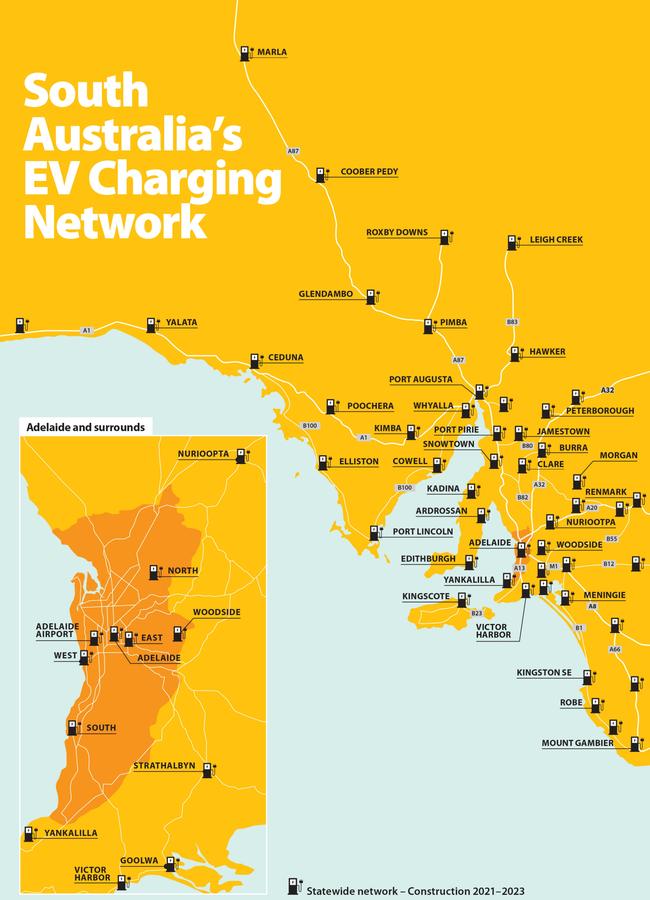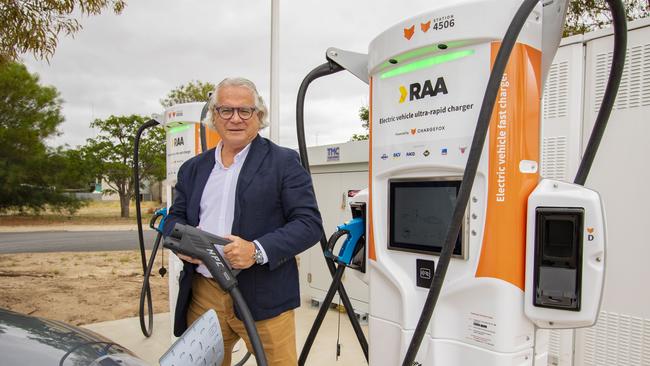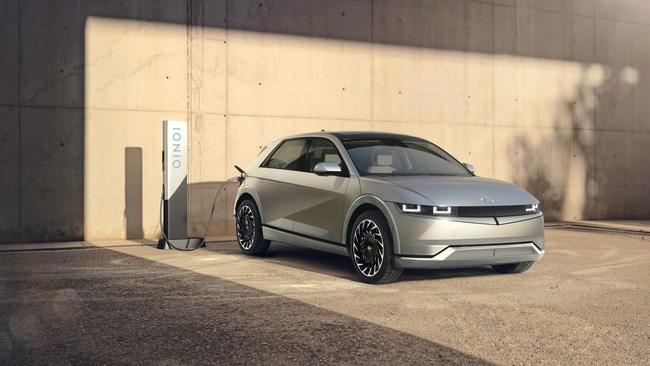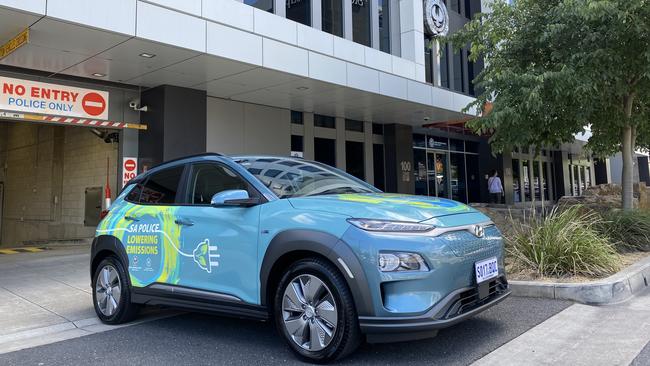Electric vehicles to be ‘preferred choice’ in SA by 2030 as charging stations increased
The state government aims to have SA homes “prefer” electric cars by 2030, with hundreds of charging stations planned. See the map.
SA News
Don't miss out on the headlines from SA News. Followed categories will be added to My News.
A network of 530 electric vehicle fast charging stations across the state, at supermarkets, motels, holiday parks and petrol stations, will be complete by 2023.
Energy and Mining Minister Dan van Holst Pellekaan said the Government’s $13.4m investment would end “range anxiety” and help people make the change over to electric.
“Fast charging, particularly in regional and remote areas, will remove a big barrier to electric vehicles – fear of running out of power, or range anxiety,” he said.
“The Marshall Government’s aim is for electric cars to be the preferred choice for households and businesses by 2030, and the default choice by 2035.
“We want to make sure motorists know they can buy an electric car, and still enjoy the pleasure of travelling our highways and byways without fear of being stranded.”
The State Government has released a map of charging locations. At each location, there may be a number of sites providing the service, with multiple chargers at each sites, totalling 530 chargers all up.
This includes 120 fast chargers in the CBD and many more throughout the suburbs.

The State Government sought Registrations of Interest from property owners and tenants interested in hosting electric vehicle chargers that would form part of the statewide network.
Following consultation, the network was extended further across regional and remote South Australia, into key tourist areas in the Adelaide Hills, Mid North, Far North, Eyre Peninsula and Limestone Coast.
Guidelines on how charge point operators can access funding and connect with potential site hosts will be made available next week.
Property owners and businesses can still register their interest to become site hosts through the Department’s website.

Transport in South Australia contributes to 30 per cent of total greenhouse gas emissions.
“Electric vehicles will lower motoring costs, air, noise and carbon pollution and help reduce the price of electricity for all South Australians by better using the grid,” Mr van Holst Pellekaan said.
“As South Australians increasingly turn to electric vehicles, we will increase the use of renewable energy generated here to power our vehicles whilst reducing our reliance on imported oil.”
RAA Mobility Technology Specialist Mark Borlace said member surveys had shown a lack of regional electric vehicle chargers was a significant disincentive to buying an electric vehicle.
“The roll out of electric vehicle charging stations, as advocated by RAA, is welcomed and will increase the uptake of these environmentally friendlier technologies,’’ he said.
“RAA supports the government’s desire to lead the nation in the uptake of electric vehicles and smart charging by 2025 and reduce electricity costs for all South Australians.’’

The State Fleet is also changing to electric, incorporating 70 plug-in vehicles plus more on order. The Hyundai Kona, Hyundai Ioniq and Mitsubishi Outlander Plug-In Hybrid are the models of choice.
Earlier this month the Government came under criticism for replacing the last remaining Holdens for ministers with the luxury 2020 Genesis G80, rather than electric alternatives.
Treasurer Rob Lucas said electric vehicle options, including the Jaguar I-Pace and the Tesla Model S, were considered too expensive, but he expected the entire public service to shift towards electric vehicles in the “very near future”.
But Electric Vehicle Council chief executive Behyad Jafari said the Hyundai Kona or Tesla Model 3 both have 450km range and are “cheaper than what they bought”.
“MG ZS EV, Hyundai Ioniq have smaller ranges, but much cheaper,” he said.
“There are lots of plug-in hybrid options like Volvo and BMW. New cars coming this year include Hyundai Ioniq 5 and Volvo XC40.”

SA Police has five plug-in electric vehicles, two Hyundai Kona and three Hyundai Ioniq, available for non-operational duties such as attending meetings, site visits and business-related activities.
“The Kona electric vehicles have a range of around 450km for longer regional trips, while the three Ioniq vehicles have a maximum range of around 300km,” a spokeswoman said.





